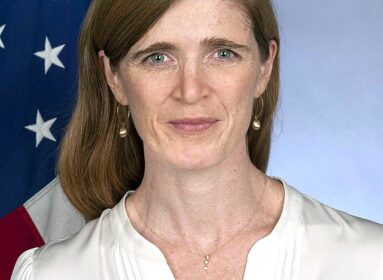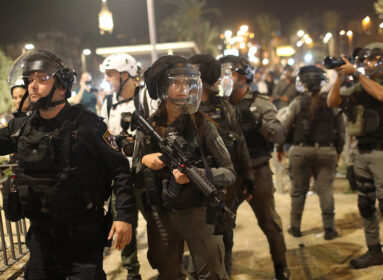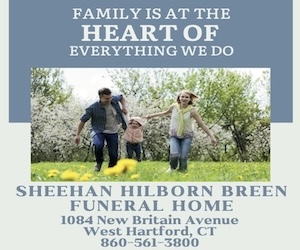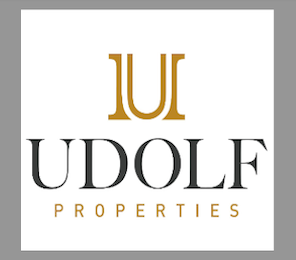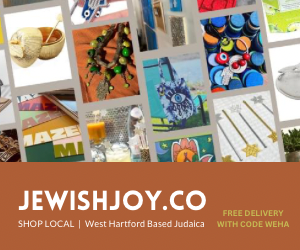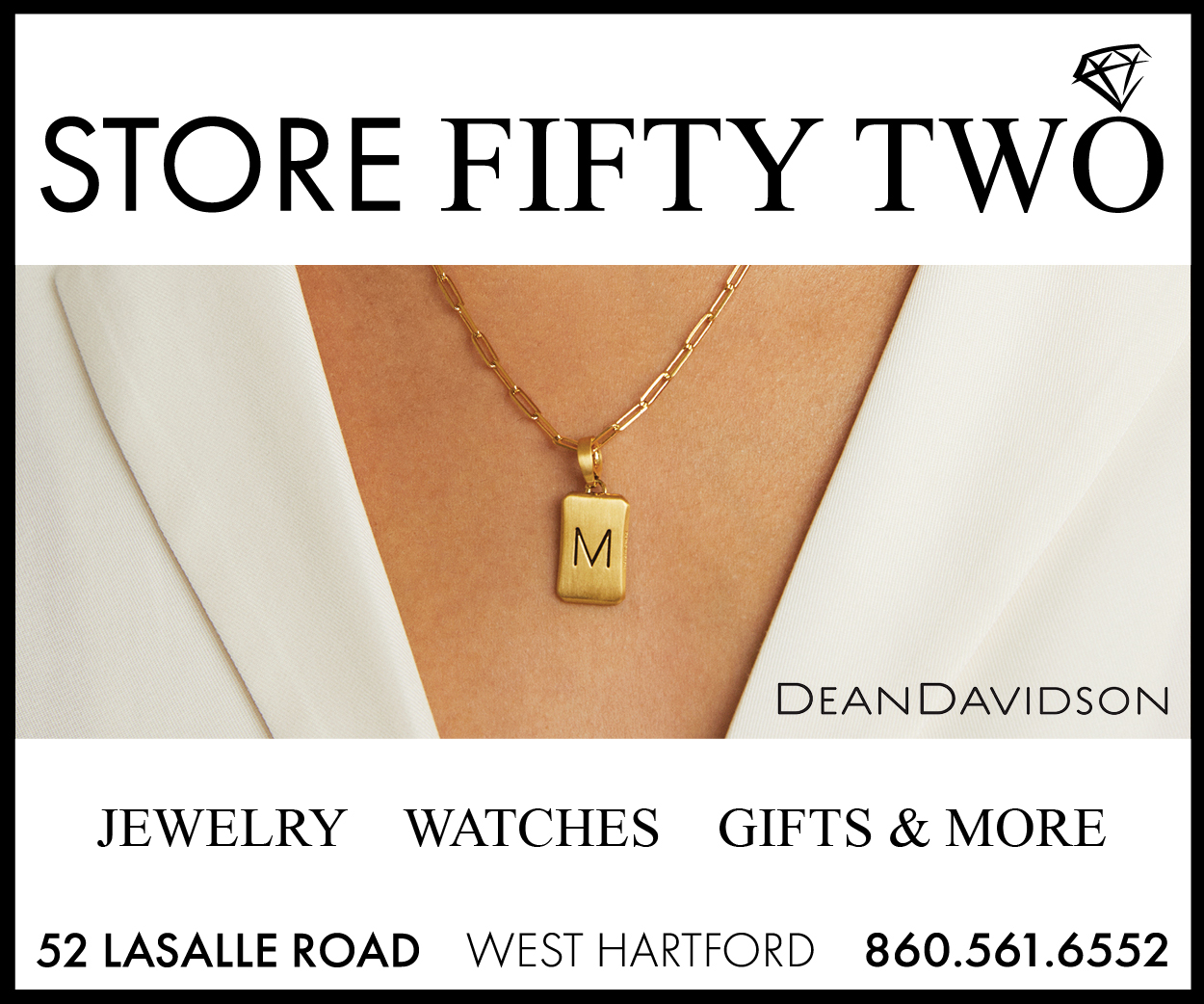
Stratford sculptor Philip Levine talks about the intersection of Judaism and art
By Cindy Mindell
STRATFORD – Sculptor Philip Levine has spent the last 40 years manipulating materials to explore his Jewish identity and interpret the big questions behind Jewish experience. His upcoming retrospective, “I Believe…A Show of Visual Theology,” opens at Congregation Beth Shalom Rodfe Zedek in Chester on August 1.
Born and raised in Bridgeport, Levine moved with his family to Fairfield in the late ‘50s. After graduating from Fairfield Warde High School, he entered the University of Bridgeport, where he spent two years in the Industrial Design program before switching to art education and earning a bachelor’s and master’s degree in the field, as well as a minor in ceramics and ceramic sculpture and Connecticut Educator Certification.
As an artist-educator, Levine has taught in a variety of educational settings, including the Bridgeport Public Schools – where he taught from 1970 to 2004 – Sacred Heart University in Fairfield, and Merkaz Community High School for Judaic Studies in Bridgeport. He is co-head of the Creative Arts Workshop Young People’s Program in New Haven, where he teaches assemblage. He also teaches Portfolio Development and Observational Drawing for high school students applying to college and presents on professional development for the public schools in Bridgeport and Stratford and local community colleges.
Levine’s artworks have been featured in both group and solo exhibits in several Connecticut museums, galleries, and colleges, and are included in the permanent collections R.D. Scinto, Inc. and the Housatonic Museum of Art at Housatonic Community College in Bridgeport. He is a member of the City Lights Gallery in Bridgeport, The Menage Gallery of World Artisans in Gloucester, Mass., Gilded Lily Gallery in Milford, and is a co-founder of George Street Gallery in New Haven and Gallery 1212 in Bridgeport. He and his wife, Lisa, a stone-cutter, live and work in Stratford, Gloucester, Mass., and New Mexico.
Levine spoke with the Ledger about how Judaism and art intersect in his work.
JEWISH LEDGER (JL): What was your Jewish upbringing like?
PHILIP LEVINE (PL): My grandparents escaped Poland pre-World War I, because my grandfather was dodging the draft – it wasn’t good for Jews in the armies, no matter what. He clearly remembered the Cossacks. He was a yeshiva bochur but he was an orphan, so no one could pay for him to continue his yeshiva studies. He had an uncle or great-uncle in Bridgeport who was a baker and who sponsored him to immigrate and took him on as an apprentice. My grandfather worked as a baker; my grandmother was a housewife raising seven kids. They had no education but all their kids were college-educated – doctors, engineers, physicists, chemists. So in a way, it was pretty intimidating as a kid to come to the holiday table, where they all would look at you and say, “Nu?”
Growing up in Bridgeport, I went to Congregation Shaare Torah, an Orthodox synagogue on Main Street, and also would go with my grandfather to Congregation Agudas Achim – the “Grand Street shul” – on the corner of Grand Street and Madison Avenue. It was very old-school Orthodox and I think my spiritual attraction to Judaism started there.
I vividly remember my grandfather having his tallis around me; I heard this language and somehow it spoke to me and, being a visual kid, when the Ark opened, stories came out and the stories were really vivid in my mind.
I went to Hebrew school, I had my bar mitzvah at Shaare Torah, and I was Jewish through and through – not so much a religious, practicing Jew, but my warp and my weft are Jewish and I know my place in my lineage and I respect it.
JL: How did your Jewish background influence your Jewish parenting?
PL: My wife, Linda, and I met at the University of Bridgeport, where we both studied ceramics. She was making a dreidel out of clay and I said, “I have to meet that lady.” I say that we still haven’t come home from our first date. She is fourth- or fifth-generation American, and her family were “high Reform Jews,” intellectuals and professionals, living on the Upper West Side of Manhattan. She was very removed from Judaism. All of her friends were Jewish so she wanted to have what her friends had, which was a Jewish connection, a Jewish relationship.
I still can see my mother swinging her finger at me, saying, “You have to marry a Jewish girl.” No matter who I went out with, that was still there. But why? Because of our common understanding, our common culture, our common ethical and moral values, our common responsibility to the community.
It was all there in our makeup and that’s what I think attracted Linda and I to each other.
So when she and I started having children, we made a conscious decision that we were going to be the Jewish examples in our family. We had two boys and that’s what always brings people back, that’s when people make tshuva – turning back – for the kids’ sake.
We started to get involved in Temple Beth Sholom in Stratford, which is now gone; it merged with Congregation B’nai Torah in Trumbull.
I realized I was interested in Jewish study. Al Berkowitz, of blessed memory, gave me a four-volume book on the Jewish people, written on a very elementary level. I kept reading and reading and it helped me relate to the kids and the holidays and we became very active in the synagogue, so I was educating myself both intellectually and practically.
JL: What led you to start studying and creating Judaic art?
PL: In the early ‘70s, … I was teaching art history at Sacred Heart University. I was lecturing one night and showed a slide of the Arch of Titus, a monument in Rome that depicts the Roman troops carrying away the menorah that allegedly was in the Temple in Jerusalem. That night, it gobsmacked me: here are the Romans sacking the Temple in Jerusalem, with probably one of our most valued artifacts. That was the night I started reading about Jewish art. I wanted to know about my Jewish artistic history, so I started focusing on that. It led me to a lot of readings, which led me to reading on Jewish meditation, Jewish spirituality, Holocaust studies, the visual ritual objects. That one night opened this big bag and dumped it and at that point, I was hooked.
My epiphany pushed me toward doing Judaica, which goes in three directions: ritual objects, Holocaust studies, and midrash on the Torah. I’m a sculptor; I call myself a “media opportunist.” I remember sitting at a bus-stop in Israel, picking up a piece of wire, and making Jewish stars out of it. It’s like Isadora Duncan, who said, “If I could tell you what I meant, I wouldn’t be a dancer.” So if I couldn’t pick up a piece of material and fashion it into something – that’s where I see before my eyes what I’ve created and it’s the way I visualize my thoughts. So I would in the media that’s at hand: I weld, I print-make, I do assemblage and found objects, I do construction, I do casting.
A very influential person on my work is Jo Milgrom, who wrote a book called Handmade Midrash, and that’s what I do. You make midrash by and with your hands. Midrash is traditionally and classically interpretation: you fill in the parts of the story that aren’t there. You fill in what could have come before, what comes after, what this thing means in terms of modern society, what does this thing mean to me as a Jew, what does it mean to my family, what does it mean to my community? Midrash is commentary and it’s welcomed in Judaism – debate, commentary, turning and turning and turning. My work is the visual turning of what I’m learning, to the point where there’s a moment when I say, “Aha, that’s what I mean.”
A lot of my work emerges from the ark because the ark, for me, was where stories came from, so we’re still writing that story. YIVO is keeping one part of the story. Jewish ritual objects and the people who build them are developing another part of the story. The Holocaust survivors and the idea of the Holocaust are all still part of who and what we are. We’re always in formation. We’re not a static culture, we’re not a dead culture. We’re a dynamic, growing, living, breathing culture who’s worried about our past, present, and future.
JL: As you talk about Jewish ritual objects, I’m reminded of Nicholson Baker, a writer who campaigned to save library card catalogs that were being destroyed to make way for computerized catalogs. What is the fate of old Judaica that is being abandoned to make way for more modern pieces or not replaced at all?
PL: My wife actually rescues Judaic objects from tag sales. But how many objects can we save and how many objects can we keep? It’s very sad to me that the objects have not become part of the next generation of Jews, which brings up the question: who are the next generation of Jews, what do they value, are there going to be ritual objects in their homes? Another very strong image from my youth is where you go to an old apartment and the mezuzah is painted over, just encrusted with deep, deep layers of paint. The mezuzah wasn’t taken down but clearly, another Jewish family never moved in. A lot of my mezuzahs are like that: they’re encrusted so that they look like artifacts of Judaism. One of my final pieces, “Jews Don’t Live Here Anymore,” looks like the negative shape of where a mezuzah was. It’s a huge question: what happens to the household Jewish ritual objects? Who’s going to have a mezuzah? Who’s going to have a Kiddush cup? Who’s going to have a Passover plate? Who’s going to have Shabbes candles? Who’s going to have a challah plate? Who will say Kaddish for them?
Just like the richness of Yiddish has been lost, soon we’re going to be six generations out and what’s going to be? Maybe that’s my next area of artwork and study – looking at what that sixth generation of Jew is going to be. Are the kids going to make that commitment that Linda and I did to Jewish education and Jewish culture and being Jewish parents? I don’t know.
“I Believe… A Show of Visual Theology” by Philip Levine: Monday, Aug. 1 – Monday, Oct. 31, Congregation Beth Shalom Rodfe Zedek, 55 East Kings Highway, Chester
Info: philiplevineartisteducator.com.








 Southern New England Jewish Ledger
Southern New England Jewish Ledger
